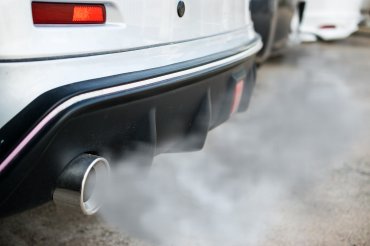SINGAPORE – New emissions standards loom for China and India, and both markets could encounter problems related to availability of compliant fuels and engine oil compatibility with gasoline particulate filters, industry insiders said at a conference last month.
One of the major uncertainties for the future lubricant industry is the oil ash limit for [gasoline particulate filter] compatibility, and there is no global consensus yet, Chen Gang, Chevron Oronites product development manager for China, told an audience at the ICIS Asian Base Oils & Lubricants Conference here.
Engine oil standards writing bodies dont agree yet on whether ash levels should be limited. As Chen noted, the International Lubricant Standardization and Advisory Committees new ILSAC GF-6A and GF-6B engine oil performance standards, due for first licensing in mid-2020, have no ash limit, while the European Automobile Manufacturers’ Associations ACEA C category caps sulfated ash at 0.8 percent by weight – a provision originally included because ACEA light-duty oil categories apply to vehicles powered by diesel as well as gasoline. The Japanese Automotive Standards Organization is developing a specification for ultra-low-viscosity passenger car motor oils, GLV-1, and it is not expected to include an ash limit.
The China 6 emission standard will be introduced in two phases: China 6a is being implemented in some jurisdictions this year and takes effect for the rest of the country in July 2020; and China 6b, which will go beyond limits in the European Union, is scheduled to become law in July 2023. China 6 standards are fuel neutral, so they apply to both gasoline and diesel vehicles. It is expected that most gasoline-powered vehicles will need particulate filters.
“China VI for heavy duty is in the advanced stages of implementation, and diesel fuel regulation [and supply] is ready for it. ILSAC GF-6 will be used on first licensing date, said Chen.
API CK-4 will be the mainstream low [sulphated ash, phosphorus and sulfur] heavy-duty motor oil in China. Chinas low SAPS HDMO specification may be applied in the future once its ready, he said.
The same after-treatment devices will be used by China OEMs, driving the needs of low SAPS HDMO, he added.
Lubricant blenders will also have to consider the impact of other regulations. Due to corporate average fuel consumption regulations and taxes on big engines, Chinas passenger car market is dominated by turbocharged gasoline engines with direct fuel injection, while sales of electric vehicles are growing fast.
China has mandated that manufacturers of light-duty vehicles meet corporate average fuel consumption targets 5 liters per 100 kilometers compliance by 2020 and 4L/100 km by 2025. The minimum fuel economy requirement for heavy-duty vehicles was ratcheted by about 13 percent on July 1.
India is scheduled to implement its Bharat Stage VI emissions standard for all vehicles on April of next year. Its limits are equivalent to Euro 6. At the same time, the cap on sulfur levels in fuel will be reduced to 10 parts per million. The current Bharat Stage IV emissions standard and 50 ppm sulfur limit were introduced in 2017.
Some say the huge jump in standards will make it difficult for industry to supply BS VI compliant fuel on time. They have made BS VI fuel available in the national capital of India and in certain other regions, while working on making it available everywhere with a slow overhaul, said Sonakshi Khurana, business analyst of Kenroger Oil Solutions in India.
The supply of BS VI-compliant fuel needs to be expanded on war footing, said Rashid Hasan, advisor for the Society of Indian Automobile Manufacturers.
But oil companies that have already put in U.S. $6.5 billion to upgrade to BS IV will now invest another U.S. $5 billion to upgrade fuel quality to BS VI. The government needs to facilitate supplying the required quality BS VI fuel countrywide, he added.
Automobile manufacturers are concerned that high-sulfur fuels could cause damage to car engines. The catalyst will be overworked, and that is connected to the engine. Engine performance will be impacted, and the only way [to improve it] is to use better quality fuel, Yamamori Kazuo, project manager of Toyota Motor Corp., told Lube Report.
The car engine is made for sulfur 10 parts per million, so it may not be suitable for 50 ppm fuel, agreed Rashid.
Photo: Ody_Stocker/Shutterstock
